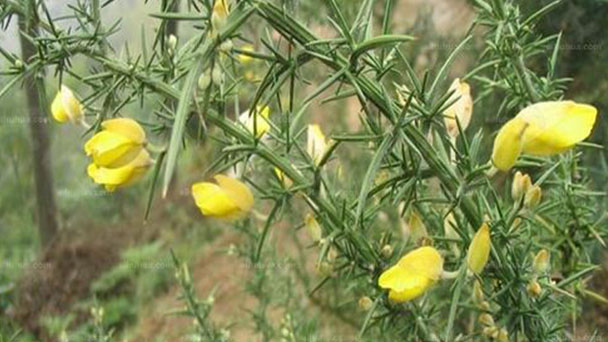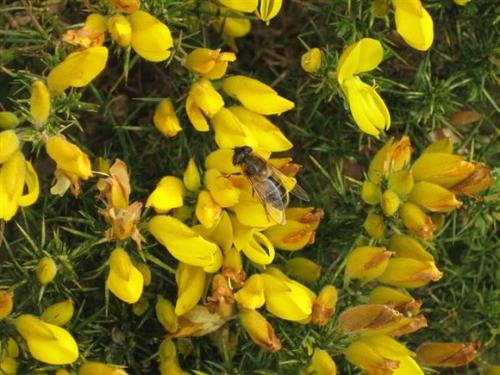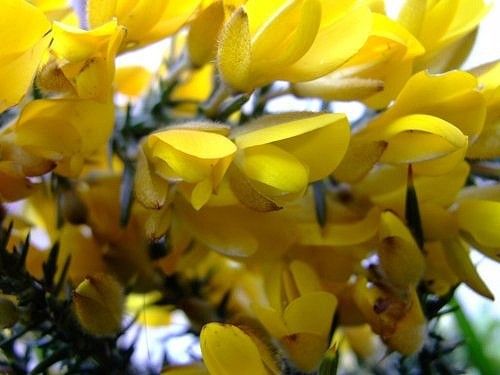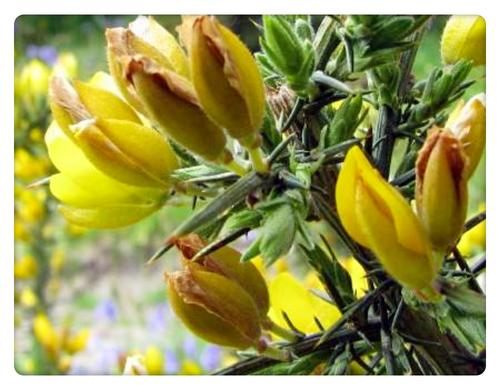Gorse (Ulex europaeus) profile
Written by Maggie
Mar 10 2021

Gorse belongs to the legume family, which grows throughout Western Europe and can be found in lush golden traces in the UK's wastelands and public lands. Ordinary plants bloom only during certain seasons. But the Gorse is full of golden flowers all the year-round. Southern Europe has a Mediterranean climate, which is ideal for growing.
Gorse picture

Morphological features of the gorse
Stems
Gorse is a prickly ornamental shrub with a height of 50~200cm. Stem is cylindrical, longitudinally angled, much-branched, slightly hairy.
Leaf
The leaves of Gorse usually degenerate, and the petioles are clustered into spines, 5 -- 15mm long, and dense.
Flowers
Flowers of Gorse are 1 to 3 axillary, in the upper stem of the complex raceme, bracts small, oval, about 2mm long; Flowers are 13 -- 15mm long, bright yellow corolla, flag obovate, apex slightly concave, winged elliptic, glabrous, keel oblong, lower margin villous, pedicels 3 -- 9mm long, bracts broadly ovate, about 2mm long, and bracts and pedicels are densely covered with brown villous; Calyx of Gorse is membranous, yellowish-brown, 12-14mm long, densely covered with brown villi, 2-lip, lobed to a few basal parts; Stamen monomer, another type 2.
Gorse is in full bloom with golden flowers all year-round.
Fruit
The pod of Gorse is narrowly ovate, 11~20mm long, densely covered with brown hairs, and contains 2~4 seeds in the persistent calyx. Seeds are ovoid, ca. 3mm long and 2mm wide, dark brown, lustrous.
The ecological habits of gorse
Gorse beans must grow in mild or warm climates.
The harmful character of gorse
Gorse was introduced by French missionaries in the reign of Emperor Tongzhi of the Qing Dynasty (1862) near the church in Chengkou. As a hedgerows cultivation, it has been extensively naturalized and invaded the shrubs and grasslands on the hillside, causing adverse effects on the local ecosystem landscape. The species has been listed as one of the "100 most harmful invasive alien species in the world".
The Gorse area of distribution
Gorse bean is native to Europe; Now it is widely introduced and naturalized.
The incursion place of Giza was Chongqing.

How to propagate Gorse
Gorse propagates specifically via seed, however it can additionally unfold vegetatively. Its seeds can continue to be manageable in the soil for over 30 years.
How to control Gorse
General Control Strategy
Gorse manipulation needs to be achieved in two stages. The first stage is to get manipulated by hooked up plants. The 2nd stage is to manage new flora from the current seed bank. The most high-quality manipulation software commonly consists of an aggregate of herbicides and cultivation or mowing.
Mechanical Control
Hand pulling or digging may also be a choice for small infestations, however the complete plant has to be eliminated because gorse can re-sprout. Chopping, reducing or mowing is a choice for flat areas. Repeated mowing may additionally be indispensable to expend root reserves.
Cultural Control
Cultivation and organising aggressive pasture species, woodland trees, or different vegetation assist withstand gorse invasions as properly as different weeds.
Biological Control
Goats are a few positive managed approaches for gorse seedlings. Chickens consume gorse seeds, and through the digestion manner the seeds are destroyed.
Herbicide Control
Please refer to the PNW Weed Management Handbook, or contact your county noxious weed coordinator.

Latest Updated
- Benefits of Bugleweed - 7 Science-backed Health Benefits
- Bugleweed Dangers & Side Effects - Is It Poisonous?
- How to Plant Evergreen Trees - What You Should Know
- When to Plant Evergreens - Grow Guide for Evergreen Trees
- 12 Wonderful Evergreen Shrubs for Your Garden
- 12 Popular Evergreen Plants with Pictures for Beginners
- When And How To Prune A Lilac Bush Like a Pro
- How to Grow & Care for Lilac Vine (Hardenbergia Violacea)
- Japanese Lilac Tree (Syringa Reticulata) Care & Propagation Guide
- Shumard Oak Pros and Cons - What to Know
Popular Articles
- Winter maintenance of Antirrhinum Majus
- How to Grow Terminalia Mantaly Tree
- How to Grow and Care for Crossostephium Chinense
- How to grow Antirrhinum Majus in spring
- Peristeria Elata (Dove Orchid) Profile: Info & Care Guide
- Underwatered Snake Plant (Sansevieria Trifasciata) - Signs And How To Fix
- How to Care for Brazilian Jasmine Plant (Mandevilla Sanderi)
- How to Grow & Care for Graptopetalum Purple Delight in Summer
- Rosa Chinensis (China Rose): Plant Growing & Care Tips
- How to Care for Baby Sun Rose (Aptenia Cordifolia)